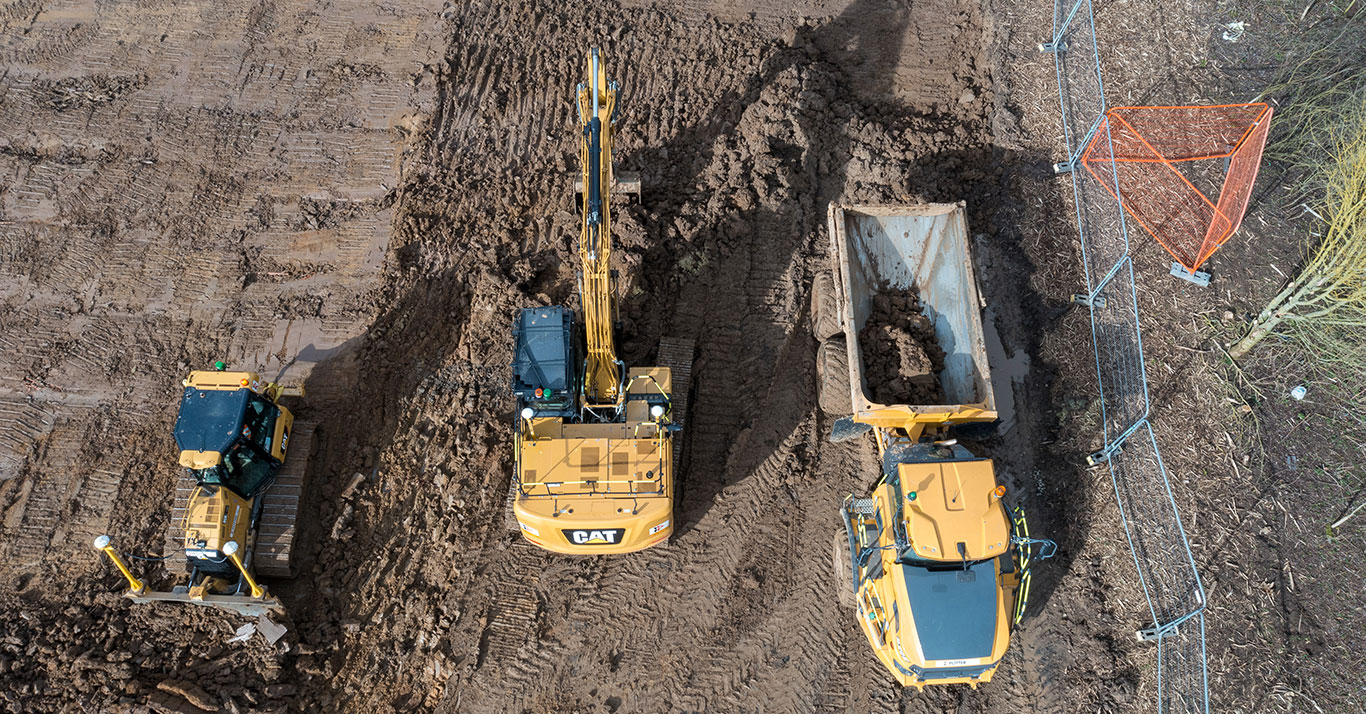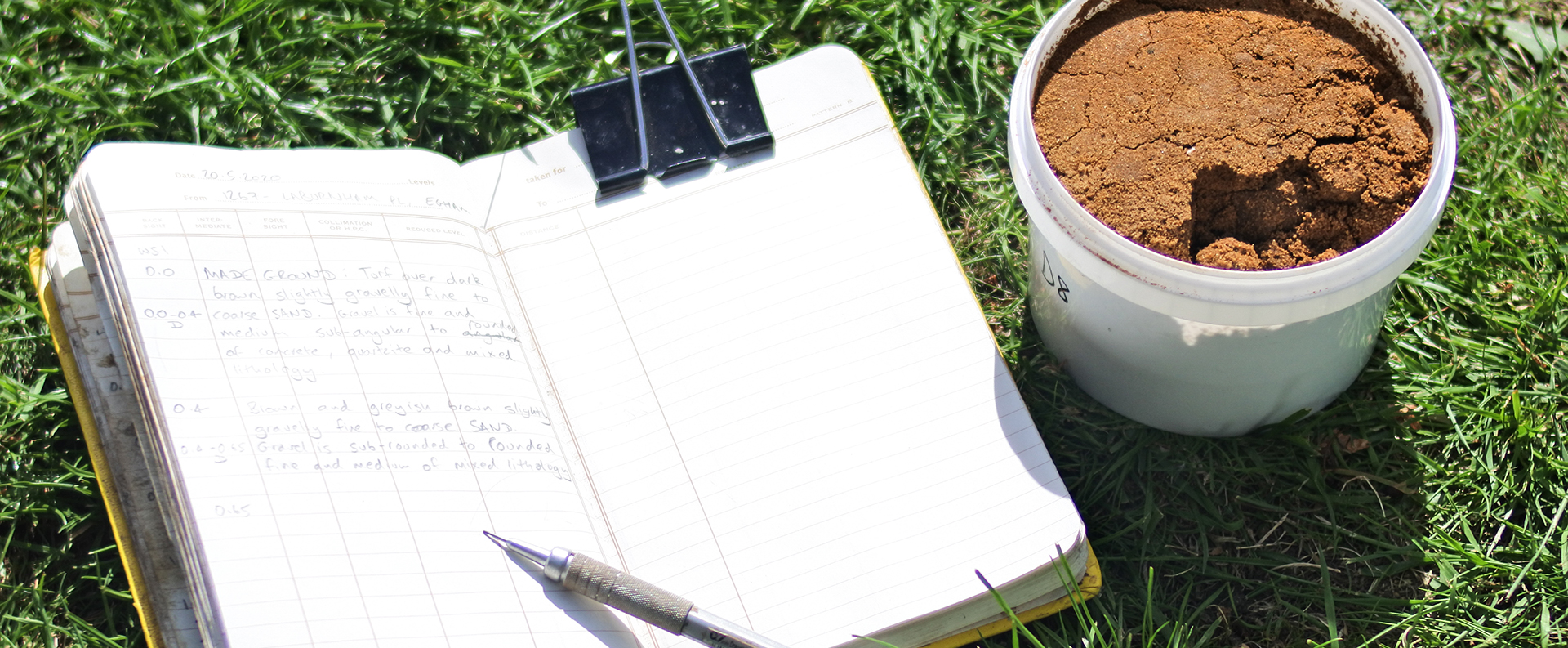A Comprehensive Guide: All About Geotechnical Engineering and Its Applications
A Comprehensive Guide: All About Geotechnical Engineering and Its Applications
Blog Article
Investigating the Interdisciplinary Nature of Geotechnical Design and Its Influence on Ground Improvement and Foundation Design
By integrating insights from architectural, ecological, and geological techniques, geotechnical engineers are furnished to attend to complicated soil actions and site-specific challenges. This joint technique not just boosts the efficiency of techniques such as soil stablizing and dynamic compaction but likewise guarantees that tasks stick to sustainability principles.
Review of Geotechnical Engineering
Geotechnical design is a vital branch of civil engineering that concentrates on the habits of earth materials and their communication with frameworks. This technique includes the research of rock, soil, and groundwater, intending to recognize their homes and how they influence the performance of civil design jobs. Geotechnical designers examine the hydraulic and mechanical actions of these materials to make sure the security and security of structures such as buildings, bridges, and keeping wall surfaces.
The range of geotechnical engineering consists of site investigations, dirt tasting, and screening, along with evaluation of soil mechanics and rock auto mechanics. Engineers use sophisticated methods to evaluate ground problems, identify possible dangers, and layout reliable ground enhancement solutions. This might involve methods such as soil stabilization, grouting, and the use of geosynthetics, which improve the strength and durability of the ground.
In addition, geotechnical engineering plays an important duty in structure design, determining appropriate foundation kinds based on dirt characteristics and packing problems. By including rigorous testing and analysis, geotechnical engineers contribute dramatically to the sustainability and resilience of infrastructure, making sure that frameworks can withstand functional and ecological stress and anxieties gradually.
Secret Interdisciplinary Relationships

Additionally, environmental engineering plays an important duty in analyzing the influence of geotechnical tasks on the surrounding community. This partnership is crucial for developing sustainable practices that minimize environmental degradation during excavation or ground improvement processes.
Furthermore, the combination of geotechnical engineering with geology enhances the understanding of subsurface conditions, assisting in even more precise site characterizations (all about geotechnical engineering). This partnership help in risk analysis, specifically in areas vulnerable to landslides or seismic activity, therefore educating danger mitigation approaches
Lastly, developments in technology have brought about interdisciplinary cooperation with data science and geoinformatics. These areas add to enhanced modeling and analysis strategies, permitting much more precise forecasts of soil behavior under numerous problems. Thus, the interconnectedness of these techniques enhances geotechnical engineering, advertising advancement and efficiency in foundation layout and ground enhancement.
Ground Improvement Strategies
Ground improvement strategies are crucial methods used to enhance the design buildings of dirt, thereby boosting its load-bearing capacity and security. These techniques are especially vital in locations where natural dirt problems are inadequate for sustaining structural tons or where ecological elements might compromise dirt integrity.
Commonalities renovation techniques consist of soil compaction, which boosts density and minimizes void areas, and grouting, which entails infusing materials right into dirt to fill gaps and bind fragments together - about geotechnical engineering. Various other techniques consist of the installment of soil nails and anchors, which offer added assistance, and the usage of geosynthetics to strengthen dirt frameworks. Deep mixing click to read more methods, such as soil-cement columns, can likewise significantly improve the stamina and rigidity of weak dirts
Additionally, dynamic compaction and vibro-replacement techniques are usually utilized to enhance soil properties in situ. These techniques can mitigate issues associated to negotiation and liquefaction, specifically in seismic locations. By employing a combination of these innovative techniques, geotechnical engineers can efficiently attend to site-specific obstacles, making certain that the structure systems will certainly carry out properly under expected loading problems, hence contributing to general task success.
Structure Layout Factors To Consider
Reliable structure design factors to consider are vital for the long life and stability of structures. A well-designed foundation has to properly support the load of the structure while fitting soil conditions, environmental elements, and prospective changes over time. Key variables consist of soil bearing capacity, negotiation features, and groundwater problems.
Comprehending the soil account with geotechnical investigations is important, as it informs the option of structure type-- be it superficial, deep, or specialized techniques such as pile structures or mat structures. The expected loads, consisting of live, dead, and ecological tons, must be properly determined to ensure the structure can resist possible failure systems, such as moving, overturning, or excessive settlement.
In addition, considerations for frost depth, seismic task, and like this potential dirt liquefaction in seismic zones are critical. In addition, drainage and dampness control must be incorporated into the foundation layout to reduce concerns connected to hydrostatic stress and soil erosion.
Cooperation among engineers, engineers, and geotechnical specialists is vital to create a detailed foundation layout that not only fulfills regulatory requirements but also ensures the long-term efficiency and safety and security of the framework. Eventually, extensive preparation and cutting-edge services are required to deal with the intricacies intrinsic in foundation style.
Study and Best Practices

One notable study involves using deep soil mixing in a high-rise structure project in a seismic area. This technique considerably improved the soil's stamina and stability, enabling for a safer and a lot more efficient structure system (all about geotechnical engineering). The job highlighted the relevance of selecting proper ground improvement approaches based on site-specific problems, including soil type and loading needs
Another example is the application of vibrant compaction for boosting the bearing capability of weak dirts beneath an industrial center. This method effectively decreased negotiation concerns and improved total site efficiency, demonstrating the performance of integrating standard engineering methods with modern-day technology.
Finest practices acquired from these study emphasize the necessity of detailed site examinations, collaboration amongst multidisciplinary groups, and the unification of innovative modeling devices. By adopting these lessons, geotechnical engineers can optimize foundation designs and ground improvement methods, eventually causing more secure and extra lasting construction end results.
Verdict
In final thought, the interdisciplinary nature of geotechnical engineering considerably improves ground improvement and foundation style. By integrating concepts from numerous design techniques, tailored techniques are created to attend to specific obstacles related to dirt properties and ecological impacts.
The range of geotechnical design includes site examinations, soil tasting, and testing, as well as analysis of dirt mechanics and rock auto mechanics. The partnership between geotechnical design and structural engineering is specifically vital, as the efficiency of structures is heavily affected by dirt behavior and buildings.Typical ground my review here enhancement techniques consist of soil compaction, which boosts thickness and reduces void areas, and grouting, which includes infusing products into soil to fill up spaces and bind fragments together. Other methods consist of the installment of dirt nails and anchors, which supply added assistance, and the use of geosynthetics to reinforce soil structures. A properly designed structure has to properly sustain the tons of the building while suiting soil problems, ecological variables, and potential adjustments over time.
Report this page